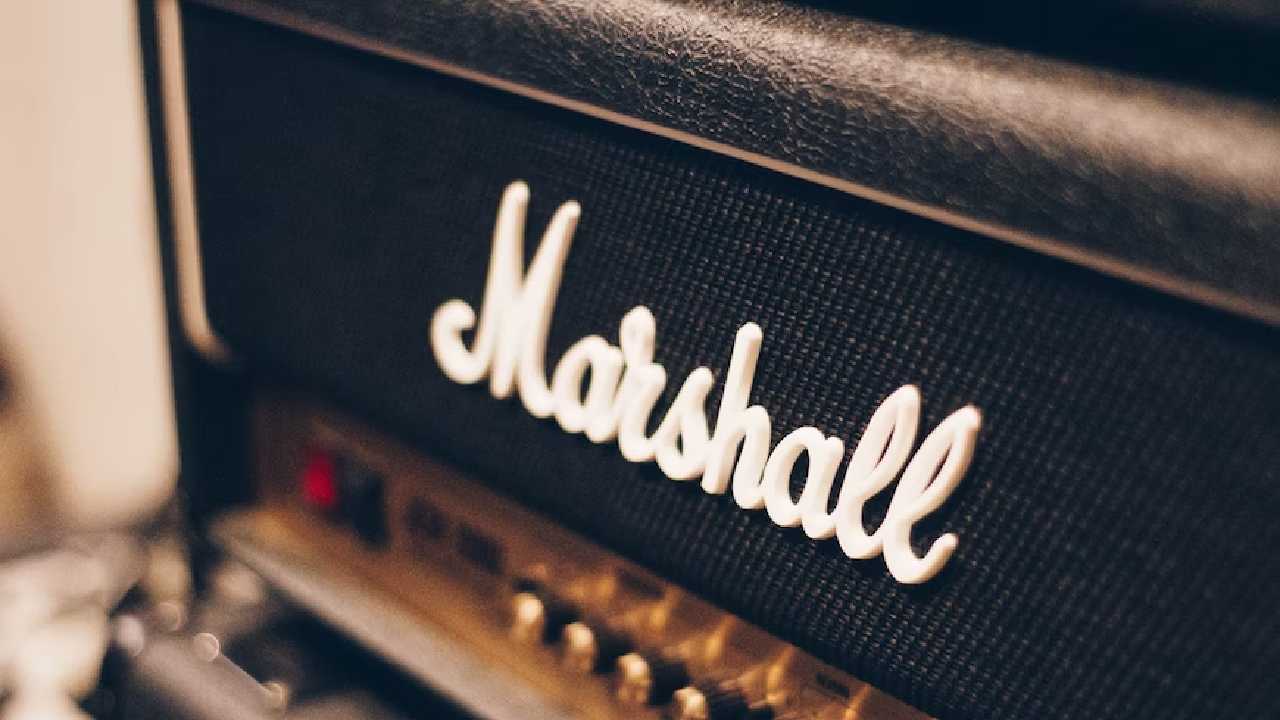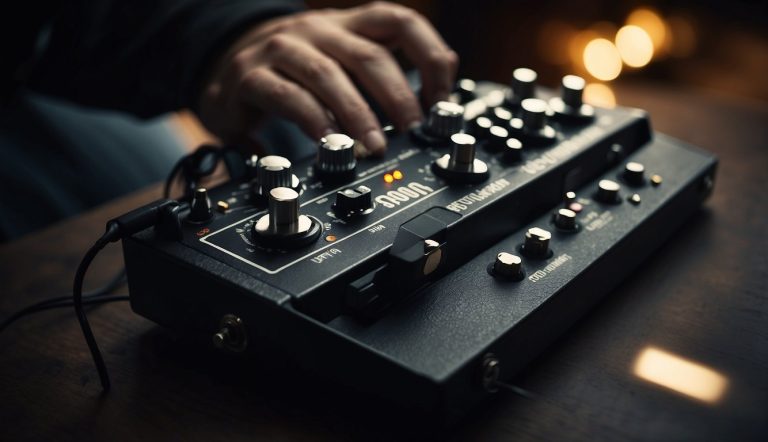How Do Guitar Amps Work? – A Simple Guide for Beginners
You may wonder how guitar amps work and the role they play in creating the remarkable tones and sounds guitarists seek. Guitar amps are crucial in shaping your guitar’s sound and giving it the power to fill a room or a stadium.
Understanding the basics of their functionality will help you appreciate their role and enhance your playing.
Quick Summary
When you pluck a guitar string, it generates an electrical signal that travels through your cable, and into the amplifier. The guitar amp’s primary role is to take this signal and amplify it to drive a speaker which projects the sound.
In addition to amplification, your amp may introduce different effects and tonal characteristics that significantly impact the final output. The key to achieving the perfect sound lies in the combination of the amplifier’s components, including tubes or transistors, transformers, and speaker cabinets.
As you explore the world of guitar amps, you’ll come across various types such as tube, solid-state, modeling and even hybrid amplifiers. Each type has its own unique characteristics and sound, so it’s essential to understand their differences and select one that matches your style and preferences. Being familiar with the inner workings of your amplifier will give you a better understanding of your gear, helping you craft your desired tone effectively.
Table of Contents
Understanding Guitar Amps
Basics of Amplifiers
A guitar amp is an essential piece of equipment for any electric guitarist, as it amplifies the sound from your guitar’s pickups and projects it through speakers. At its core, an amplifier does this by taking the electrical signal generated by the guitar’s pickups and boosting it so that it can drive a speaker to produce sound. The two primary components of a guitar amp are the preamp and the power amp. The preamp shapes your guitar tone, allowing you to control the gain, EQ (bass, middle, treble), and sometimes built-in effects like reverb and distortion. The power amp, on the other hand, amplifies the shaped signal from the preamp so that it can drive the speakers.
Types of Amps
There are mainly three types of guitar amps: tube amps, solid-state amps, and digital (modeling) amps.
- Tube amps: These amplifiers rely on vacuum tubes or valves to shape and amplify the guitar’s signal. Tube amps are known for their warm, organic tone, natural compression, and smooth distortion when pushed to their limits. They are the preferred choice among many guitarists for their dynamic response and rich harmonic content. However, tube amps tend to be more expensive, heavier, and require maintenance, such as periodic tube replacement.
- Solid-state amps: Instead of tubes, these amps use transistors to accomplish signal processing and amplification, making them more affordable, reliable, and lighter compared to tube amps. While some solid-state amplifiers can achieve a good, clean tone, they generally lack the warm and dynamic response of tube amps and may sound more sterile at higher gain levels.
- Digital (modeling) amps: By leveraging digital signal processing (DSP) technology, these amps simulate the sound and characteristics of various tube and solid-state amplifiers. They are a versatile and cost-effective option, as they can offer a wide range of amp models, built-in effects, and recording capabilities. However, some purists may argue that digital amps do not entirely capture the nuances and warmth of a real tube amp.
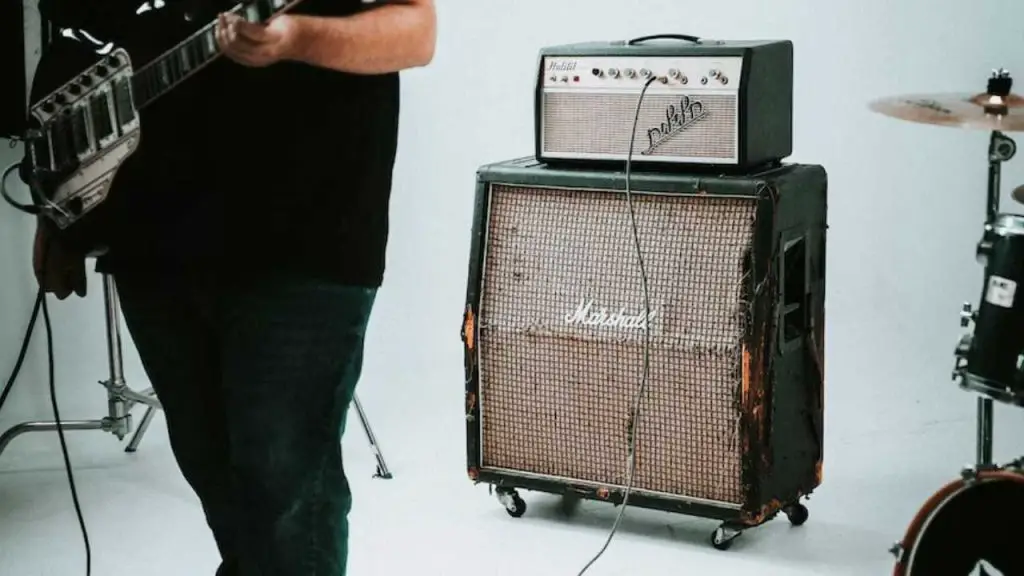
Factors Affecting Tone
Your guitar amp’s sound is influenced by several factors, including the speaker, cabinet, EQ settings, and built-in effects. The speaker type, size, and design can drastically impact your tone color and projection. Larger speakers generally provide greater bass and volume, while smaller speakers emphasize the treble and midrange frequencies.
The cabinet design also influences your amp’s sound, as closed-back cabinets result in a tighter low-end response, whereas open-back cabinets create a more airy, room-filling sound. Experimenting with different EQ settings can help you shape the tone you desire. For instance, increasing the bass and treble controls while reducing the midrange can create a “scooped” sound favored by metal guitarists. Lastly, built-in effects like reverb, chorus, and delay can significantly alter your overall tone, adding depth, space, or texture to your sound.
Remember, the key to achieving your desired guitar tone lies in understanding how these different factors interact in your specific amp, and finding the perfect balance to suit your style and preferences.
Practical Advice for Guitarists
How to Choose the Right Amp
When choosing a guitar amp, consider your budget and specific needs. For beginners or those on a tight budget, a practice amp might be sufficient. These smaller amps often have 6- or 8-inch speakers and are designed for personal use at home.
As you gain experience and expand your sound, you might consider upgrading to a modeling amp, which provides a variety of preset amp sounds and effects. These amps allow you to explore different tones and genres without needing multiple amps.
For a more professional sound, a valve or tube amplifier can produce warm and natural tones that many guitarists prefer. However, valve amps can be costly and require more maintenance than other types of amps.
You may also opt for a hybrid or solid-state amplifier, which combines the best features of both tube and solid-state technology. These amps tend to be more affordable and require less upkeep.
Maintaining Your Amp
To ensure your amp stays in top shape, follow these guidelines:
- Keep your amp clean and dust-free. Use a soft cloth to wipe down the exterior and clean any dust or debris from the speakers.
- Store your amp in a cool, dry place away from direct sunlight and extreme temperatures.
- Regularly check the tubes in your tube amplifier, as they can wear out over time. Replace tubes as needed to maintain optimal performance.
- For hybrid and solid-state amplifiers, make sure to keep the ventilation system free of obstructions and dust to prevent overheating.
Troubleshooting Issues
If you encounter problems with your amp, try the following:
- First, check all connections, cables, and power sources to ensure everything is properly connected.
- If your amplifier is producing weak or no sound, check for blown fuses or damaged tubes. Replace them as necessary.
- Should you notice unusual humming or noise, try moving the amp away from other electronic devices, as they can cause interference.
- In case of persistent issues or concerns, consult a professional technician or contact the amp’s manufacturer for guidance and assistance.
By following these practical tips, you can get the most out of your guitar amp and enjoy playing your instrument with confidence.
Speakers and Cabinets
Types of Speakers
When it comes to choosing speakers for your guitar amp, there are several options. Generally, the two most common types are dynamic and electrostatic speakers. Dynamic speakers are the standard choice for guitar amplifiers due to their versatility and warm sound. Electrostatic speakers, on the other hand, are more commonly found in high-end audio systems and are not typically used in guitar amps.
Different Cabinet Sizes
Speaker cabinets come in various sizes, which can affect the overall tone and volume of your guitar sound. Some common cabinet sizes include:
- 1×12: A single 12-inch speaker, offering a compact size that’s ideal for smaller venues or practice sessions.
- 2×12: Two 12-inch speakers, provide a fuller sound and increased volume. This configuration is popular for gigs and medium-sized venues.
- 4×10: Four 10-inch speakers, often found in bass guitar cabinets, providing a punchy and focused sound.
- 4×12: Four 12-inch speakers, producing a powerful and massive sound, commonly used in large venues or recording studios.
Keep in mind that the size of your speaker cabinet will impact your amp’s volume and tonal characteristics, so choose one that best suits your needs and performance settings.
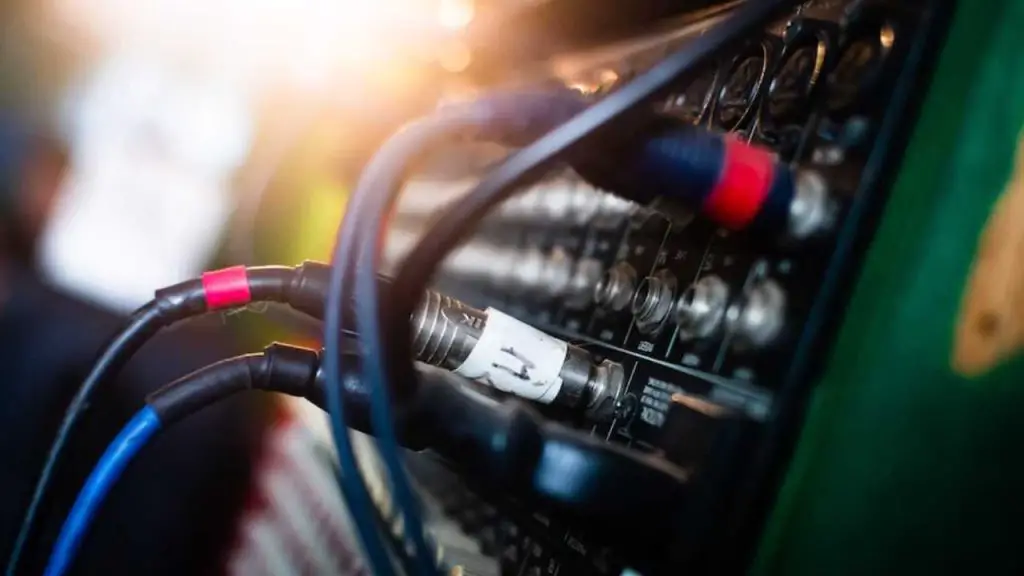
Materials and Construction
The materials and construction of your speaker cabinet play a significant role in the overall sound and durability of your guitar amp. Most cabinets are made from either plywood or MDF (medium-density fiberboard), with plywood being the more popular choice due to its lighter weight and better resonance. The thickness of the wood also affects the sound quality, with thicker wood providing more low-end response and projection.
When it comes to the speaker covering, some common options include tolex (a rugged, moisture-resistant vinyl material) or cloth (providing a more vintage look). The grille cloth, which protects the speaker cones, can also influence the sound, with thicker fabrics creating a more muted high end and thinner options allowing for more brightness.
Remember to consider both the tonal and practical aspects of speaker and cabinet materials when making your decision.
Electronics and Components
Pickups and Controls
When you play your electric guitar, the vibrations of the strings create an electromagnetic field, which is then detected by the pickups. These pickups translate these signals into electrical currents and send them to your amplifier. Your guitar’s volume and tone controls allow you to adjust the output and tonal characteristics of these signals before they reach the amplifier.
Tubes and Transistors
There are two main types of guitar amplifiers: tube amps and solid-state amps. Tube amps, also known as valve amps, use vacuum tubes (or valves) to amplify the signal. These tubes, such as the popular 12AX7, contain a heated cathode, an anode, and a grid. As electrons flow from the cathode to the anode, the grid helps control this flow and amplify the guitar’s signal.
Solid-state amps, on the other hand, use transistors to amplify the signal. Transistors are smaller, more durable, and less expensive compared to tubes. However, they typically produce a different tonal quality, which some guitarists may prefer.
Hybrid amps combine both tubes and transistors in their circuits. These amplifiers often use tubes in the preamplifier section and transistors in the power amplifier section, achieving a combination of the warmth of tube amps and the reliability of solid-state amps.
Other Electronic Components
Besides tubes and transistors, there are other crucial electronic components in a guitar amplifier, such as resistors, capacitors, and inductors. These components work together to shape the overall sound of your amplifier.
Your amp will also have various controls that adjust the sound, such as presence, treble, mid, and bass controls. Presence control allows you to fine-tune the high-frequency response of your amplifier, while the other EQ controls affect different frequency bands.
By understanding the basic electronics and components involved in how guitar amps work, you can make more informed decisions when purchasing an amp and shaping your guitar’s tone.
Effects and Signal Processing
What Are Built-In Effects?
Many guitar amps come with a range of built-in effects that can enhance your playing experience. Some of the most common built-in effects include reverb, chorus, and distortion. Reverb is useful for creating a sense of space and depth in your sound, while chorus can add a thick, lush tone. Distortion, on the other hand, delivers that signature overdriven or “crunchy” sound that so many guitar players love.
To make the most of these effects, you can experiment with different settings to fine-tune your sound. Adjusting the level of the effect, the rate, or the intensity can dramatically change the way your guitar sounds through the amp.
What About Effects Loops and Pedals?
In addition to built-in effects, you can also incorporate external effects pedals into your signal chain. Many amps feature an effects loop – a dedicated input and output for connecting your pedals directly to the amp.
Using an effects loop can help maintain the integrity of your guitar’s signal, especially when using multiple pedals.
Guitar pedals come in a vast range of types, from distortion and overdrive to delay and modulation effects like chorus. The key is to choose the right pedals for your desired sound and to connect them in the correct order to achieve the best signal flow.
Signal Chain Considerations
Your signal chain is the path your guitar’s signal takes from your instrument to the amp. To optimize your tone, it’s essential to consider the order of the effects and pedals in your chain. Generally, it’s a good idea to place your guitar pedals in the following order: tuner, filters (e.g., wah-wah), compressors, distortion and overdrive, modulation effects (like chorus or flanger), and finally, time-based effects (such as delay and reverb).
Remember, experimenting and tweaking your signal chain is a significant part of shaping your unique sound. Feel free to deviate from conventions and trust your ears to find the best configuration for your desired tone.
Popular Amp Brands and Models
Marshall
Marshall is one of the most iconic and popular guitar amplifier brands in the market. Known for their powerful and warm tone, Marshall amps have been a staple on stage for rock legends like Jimi Hendrix and Eric Clapton. Some of their popular models include:
- JCM800: Classic British high-gain tones for rock and heavy metal.
- JCM900: Similar to the JCM800 but with more gain and versatility.
- DSL: The updated version of the JCM2000, offering more features and tonal flexibility.
Vox
Vox, another British brand, is well-respected for producing amps with a unique and chimey sound. Their signature “jangly” tone has been favored by famous guitarists like The Beatles, U2’s The Edge, and Radiohead’s Jonny Greenwood. A few popular Vox models include:
- AC15: The iconic 15-watt, two-channel amp with a distinctly British flair.
- AC30: A 30-watt version of the AC15, offering a larger sonic footprint and more headroom.
- Valvetronix: A series of digital modelling amps offering tonal flexibility and affordability.
Mesa Boogie
Mesa Boogie is an American amp manufacturer, known for its high-quality, high-gain amplifiers. Founded in the 1970s by Randall Smith, these amps are often associated with hard rock, metal, and progressive genres. Some popular Mesa Boogie models are:
- Dual Rectifier: A versatile, powerful amplifier favored by rock and metal musicians for its raw gain and dynamic tonal range.
- Mark V: An evolution of the Mark series, offering various tonal options and features suitable for a wide range of styles.
- Express Plus: A practical, mid-range amp series with customizable voicings and built-in effects.
Others
Many other brands and models are also worth considering, depending on your specific tonal needs and budget. Some notable brands and models include:
- Fender: Renowned for their clean, warm tones and several iconic models like the Twin Reverb and Deluxe Reverb.
- Orange: A British brand known for their colorful appearance and thick, punchy sounds. Popular models include the Rockerverb and Thunderverb series.
- Blackstar: A newer brand offering modern features, versatility, and affordability, with popular models such as the HT Club and HT Metal series.
Keep in mind that each brand and model offers unique characteristics, so it’s important to explore different options to find the perfect amp for your specific playing style and preferences.
Advanced Topics
Guitar Amp Technology Evolution
You’ve likely noticed that guitar amps have evolved significantly over time. In the early days, amplifiers utilized vacuum tubes, which created a warm, signature sound. As time went on, transistor and digital technologies started to make their mark on the world of guitar amps. Thanks to these innovations, a broad range of tones and features can now be found in both digital modeling and tube amps.
Vacuum tubes, also known as valve amps, are considered by many purists to be the holy grail of guitar tone. Tube amps are known for their rich and full sound, with natural harmonics that can be easily altered by the way you play your electric guitar. However, these amps are also more sensitive and fragile than their solid-state counterparts, making it essential to handle and maintain them carefully. Some examples of popular tube amp models include the iconic Marshall DSL100 and classic Fender Tone Master.
Modeling amplifiers, on the other hand, use digital signals to recreate the sounds of different types of amps. They can often emulate classic tube amps while providing a wide variety of tones and effects with greater ease of use.
Unlike tube amps, modeling amps are more resilient and versatile, making them suitable for diverse musical styles.
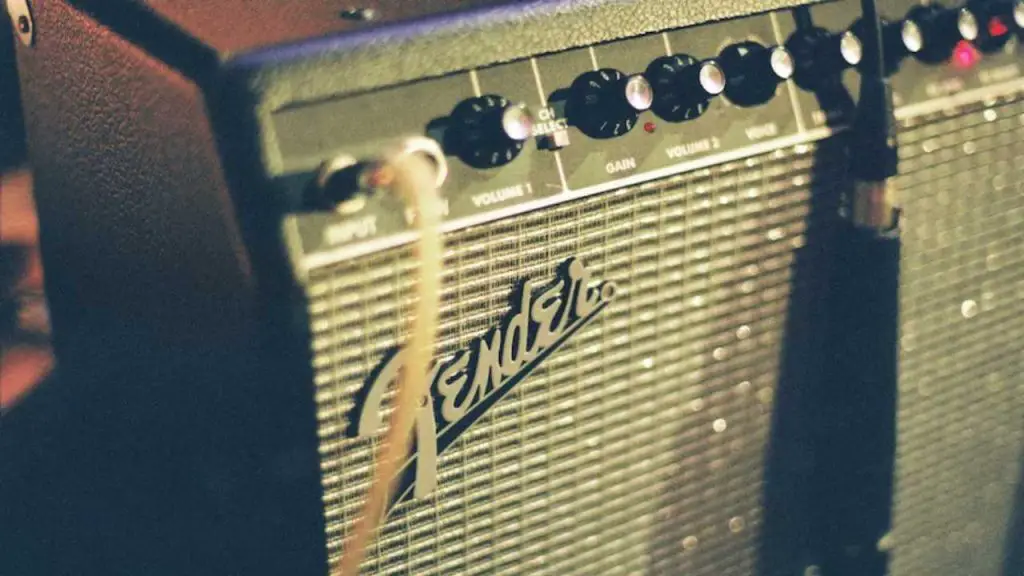
Experimenting with Setup and Gear
One of the more intriguing aspects of working with guitar amps is experimenting with various setups and gear configurations. Some essential elements that can significantly affect your amp’s tone are connections, power amplifier, input stage, and output stage. Here’s a brief overview of each:
- Connections: Ensuring that your electric guitar, cables, and amp are properly connected is vital for producing optimal sound. Always use high-quality cables with secure connections to avoid unwanted noises or signal loss.
- Input stage: The input stage typically consists of gain and tone controls that help shape the sound of your guitar before it gets amplified. Experiment with various settings to achieve your desired tone.
- Power amplifier: The power amplifier is responsible for taking the pre-amplified signal from the input stage and increasing its overall volume. It’s essential to find a power amplifier that matches your particular amp setup for the best results.
- Output stage: The output stage, which includes the speaker(s), is responsible for converting the electrical signals from your amp back into sound waves. The choice of speaker materials, such as alnico or ceramic magnets, can influence the final tone of your guitar.
In addition to the critical components mentioned above, experimenting with different guitar strings, pickups (e.g., humbuckers, single coils), and tone control settings can yield vastly different sound profiles from your amp.
So, don’t be afraid to try new things and fine-tune your setup to create your own unique signature sound. With practice and patience, you’ll be well on your way to mastering the art of guitar amplification.
Frequently Asked Questions
What’s The Role of Tubes In Amplifiers?
Tubes play a crucial part in shaping the tone and sound of your guitar amplifier. They work as a sort of valve, controlling and amplifying electronic signals from your instrument. The sound produced by tube amplifiers is often described as “warm” and “rich,” offering harmonics and overdrive that many guitarists prefer over solid-state amplifiers.
What Are Important Parts In A Guitar Amp?
There are several key components of a guitar amp, including the preamp, power amp, and speaker. The preamp is responsible for amplifying and shaping your guitar’s initial signal, while the power amp further boosts that signal to drive the speakers. The speakers ultimately convert the electronic signals into sound waves, which you hear as music. Other parts, like the tone stack and effects loop, play a role in shaping your sound further and adding effects.
How Do Different Amplifiers Affect The Sound?
Different guitar amplifiers can have a significant impact on your overall sound. Factors such as tube type or configuration, circuit design, and even speaker size can influence the tone and character of an amplifier. For example, some amps are known for their clean, crisp tones, while others excel at producing heavy distortion. Additionally, certain amps are better suited for specific genres, like jazz or metal, based on their tonal qualities and available features.
What Are The Basic Principles of Guitar Amplifier Electronics?
Guitar amplifiers work by taking the weak electrical signal from your guitar and boosting it to generate a louder sound. This is accomplished through a series of electronic components, such as resistors, capacitors, and transformers. In tube amps, the vacuum tubes serve as the main device for amplifying the signal, whereas in solid-state amps, transistors perform this function. Ultimately, the amplified signal is sent to the speakers, where it is transformed into audible sound.
How Does a Stereo Tube Amp Differ From a Mono Amp?
A stereo tube amp uses two separate channels to amplify left and right signals separately, creating a wider, more spacious sound. This effect is often used to create a sense of depth and dimension in your guitar tone. In contrast, a mono amp only uses a single channel to amplify both left and right signals, resulting in a more focused, centered sound.
Do Guitar Amps Require Charging?
Guitar amplifiers do not typically require charging, as they are designed to be powered by either an AC power source (like a wall outlet) or batteries for portable units. Tube amplifiers, however, do require a warm-up period before use to allow the tubes to reach their optimal operating temperature, and they may require periodic maintenance to replace worn tubes. But rest assured, you won’t need to charge your guitar amplifier like you would a smartphone or other electronic devices.

